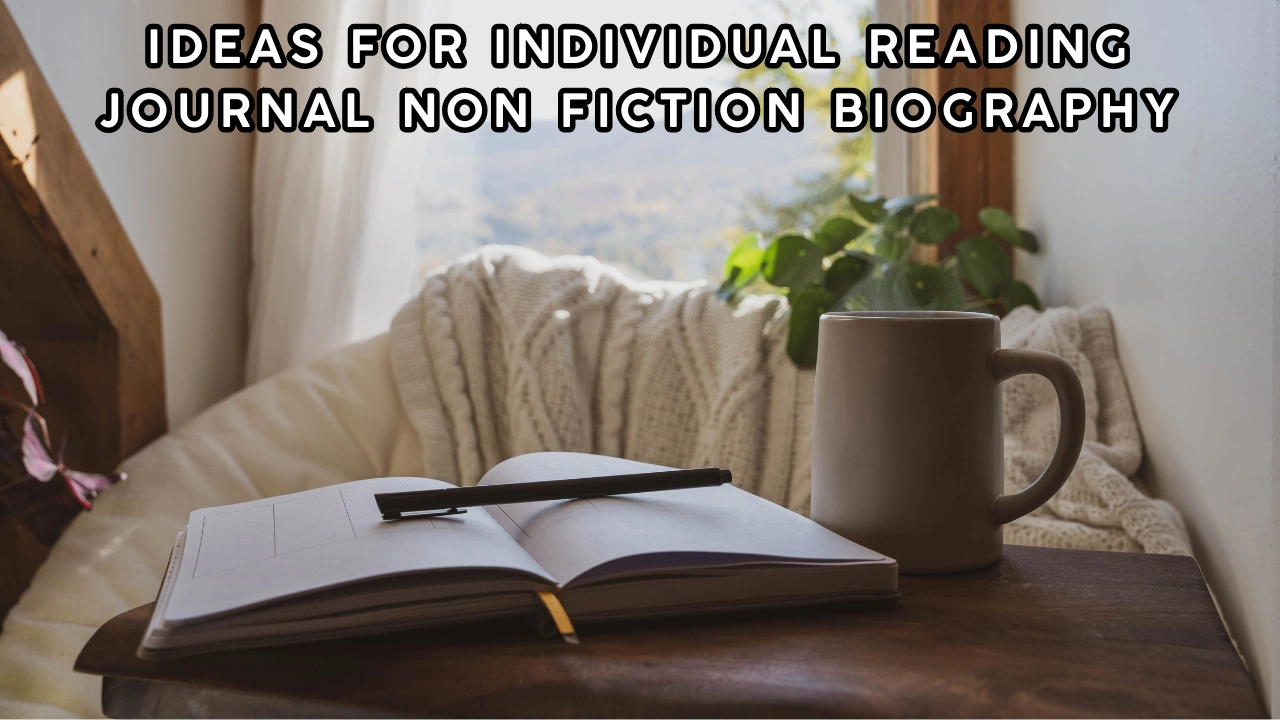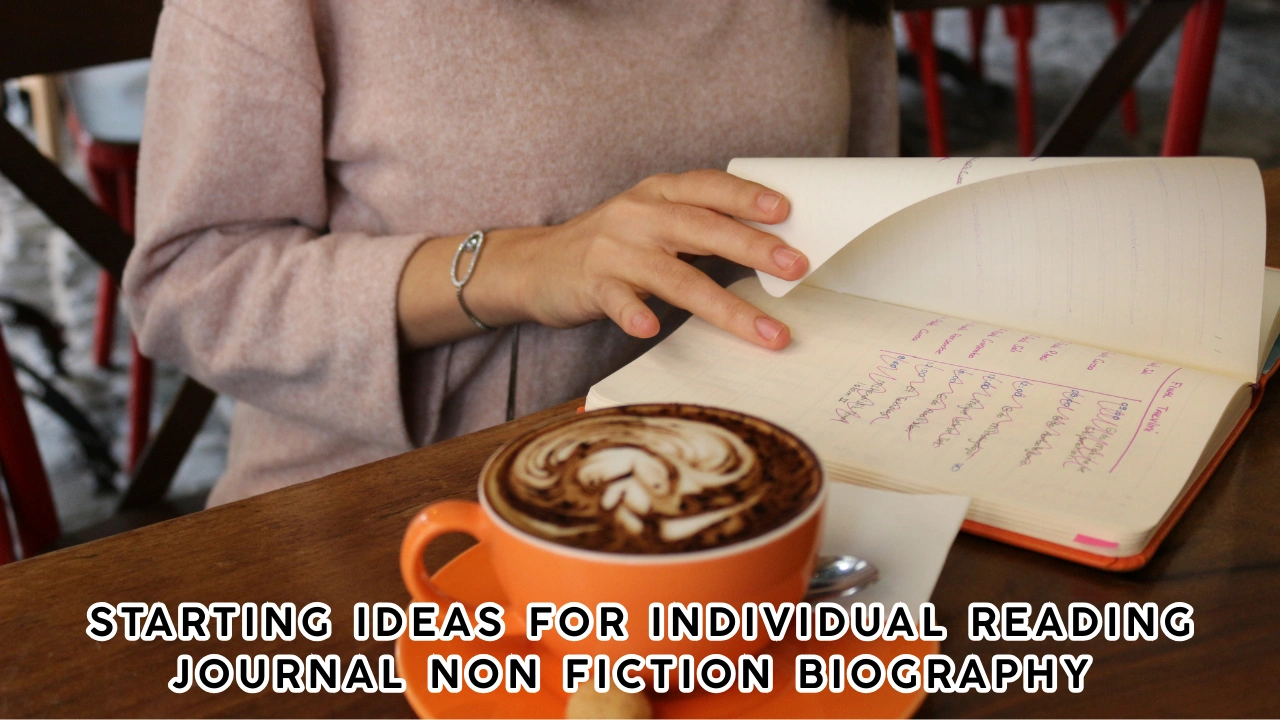Ideas for Individual Reading Journal Non Fiction Biography You’ll Love

Keeping a reading journal is a fantastic way to deepen your connection with the books you read, especially when it comes to non-fiction biographies. These books offer a glimpse into the lives of extraordinary individuals, giving readers lessons, inspiration, and new perspectives. A journal tailored to capturing these insights not only enhances your reading experience but also becomes a personal record of growth and learning. This article explores ideas for individual reading journal non fiction biography, helping you create a meaningful and creative journal.
The Importance of a Reading Journal
A reading journal is more than just a log of books you’ve read. It’s a space to explore the lessons and ideas you’ve encountered and relate them to your own life. When reading non-fiction biographies, journaling can help you absorb the subject’s challenges, successes, and unique journeys. This practice enhances memory retention and encourages critical thinking, allowing you to internalize the values and strategies of remarkable individuals.
For example, reading about a historical leader like Abraham Lincoln might inspire you to reflect on how perseverance can overcome adversity. Writing about these reflections in your journal helps you process the material and connect it to your own experiences. Journaling not only helps you track your progress but also makes your reading experience more interactive and engaging.
Getting Started with Your Journal
Starting a reading journal for non-fiction biographies doesn’t require much. You can use a physical notebook or a digital platform, depending on your preference. The key is to create a structure that works for you. Consider dividing your journal into sections, such as summaries, reflections, and quotes. This organization helps you navigate your thoughts and ideas easily.

To make your journal functional and visually appealing, you might include a table of books you’ve read or plan to read. Such a table could have columns for the book title, author, key themes, and the date completed. This format makes it easy to glance at your progress while inspiring you to keep going.
| Book Title | Author | Key Themes | Completion Date |
|---|---|---|---|
| Becoming | Michelle Obama | Leadership, Resilience | March 15, 2024 |
| Steve Jobs: A Biography | Walter Isaacson | Innovation, Creativity | April 10, 2024 |
| The Diary of Anne Frank | Anne Frank | Courage, Hope | May 5, 2024 |
Ideas to Enrich Your Journal
When working on your reading journal, consider incorporating creative ideas that make it a reflection of your personality. Writing summaries of chapters or sections is a great way to start. Summaries help you distill the essence of the biography and retain key details. Reflecting on how the book connects to your life adds depth and makes the experience more personal.
One approach is to identify recurring themes in the biographies you read. If a book highlights leadership, perseverance, or creativity, document how these themes resonate with you. For instance, if a biography discusses overcoming failure, you could reflect on a time when you faced a similar challenge and overcame it.
Another engaging idea is to include memorable quotes from the book. Non-fiction biographies often contain powerful statements that encapsulate the subject’s philosophy or worldview. Writing these quotes in your journal and explaining their significance helps you connect deeply with the material.
How Non-Fiction Biographies Inspire Growth
Non-fiction biographies provide insights into the minds and lives of people who have made an impact on the world. These books can be a source of motivation, showing that even the greatest achievements often come from humble beginnings. When you read about someone like Helen Keller or Thomas Edison, you realize the importance of persistence and innovation.
In your journal, you might explore how these lessons apply to your personal and professional life. Did a biography teach you something about managing time or making decisions? Write about it. These reflections transform your journal into a tool for growth and self-improvement.
A journal entry table for reflections could look like this:
| Biography | Lesson Learned | Application in Life |
|---|---|---|
| Long Walk to Freedom | Importance of resilience | Staying strong during personal setbacks |
| The Wright Brothers | Creativity in problem-solving | Approaching challenges innovatively |
Keeping the Process Creative and Fun
Journaling should be an enjoyable activity. Adding creative elements like sketches or illustrations can make your journal unique. If you come across a vivid scene in a biography, consider drawing it or describing it in detail. These artistic touches add a layer of personalization and make your journal something you’ll love revisiting.
Additionally, you can use your journal to track upcoming biographies you’re excited to read. Keeping a list of future reads keeps your interest alive and ensures you never run out of inspiration. As you explore ideas for individual reading journal non fiction biography, remember to make the process fun and rewarding.
Why Journaling Works for Biographies
The lives chronicled in non-fiction biographies often feel larger than life. By journaling, you make these stories relatable to your own experiences. Writing about their challenges and triumphs gives you a better understanding of how success is often born from adversity. This practice encourages empathy and a broader perspective on life.
For instance, reading about someone like Rosa Parks could inspire you to think about the importance of standing up for what you believe in. Journaling helps solidify these ideas and ensures you carry them forward into your own actions.
Conclusion
Exploring ideas for individual reading journal non fiction biography opens up endless possibilities for learning and reflection. From tracking your favorite books to noting down life-changing lessons, your journal becomes a companion in your literary journey. Personalizing it with creative elements and thoughtful reflections makes it an invaluable tool for growth. Start your journal today, and let it become a space where the wisdom of the world’s most remarkable people inspires your life.
By incorporating these ideas for individual reading journal non fiction biography, you can transform your reading experience. Let each biography be a stepping stone toward understanding yourself and the world better. Journaling is more than a task; it’s a creative exploration of ideas that can shape your life in profound ways.
Frequently Asked Questions
What should I include in a reading journal for non-fiction biographies?
You can include chapter summaries, key quotes, personal reflections, themes, and lessons learned. Adding creative elements like drawings or mind maps can make your journal more engaging and unique.
How do I choose the best non-fiction biographies for my journal?
Choose biographies based on your interests or goals. Look for figures you admire or whose journeys inspire you, such as historical leaders, entrepreneurs, or artists. Reviews, bestseller lists, and recommendations can guide you.
What are some creative ways to organize my reading journal?
Organize your journal into sections, such as summaries, reflections, favorite quotes, and character analyses. You can also use tables to track books, themes, or lessons, and color-code entries for easier navigation.
Can I use a digital format for my reading journal?
Yes, digital platforms like apps or word processors work well for reading journals. They allow easy organization, searching, and adding multimedia elements like images or links.






